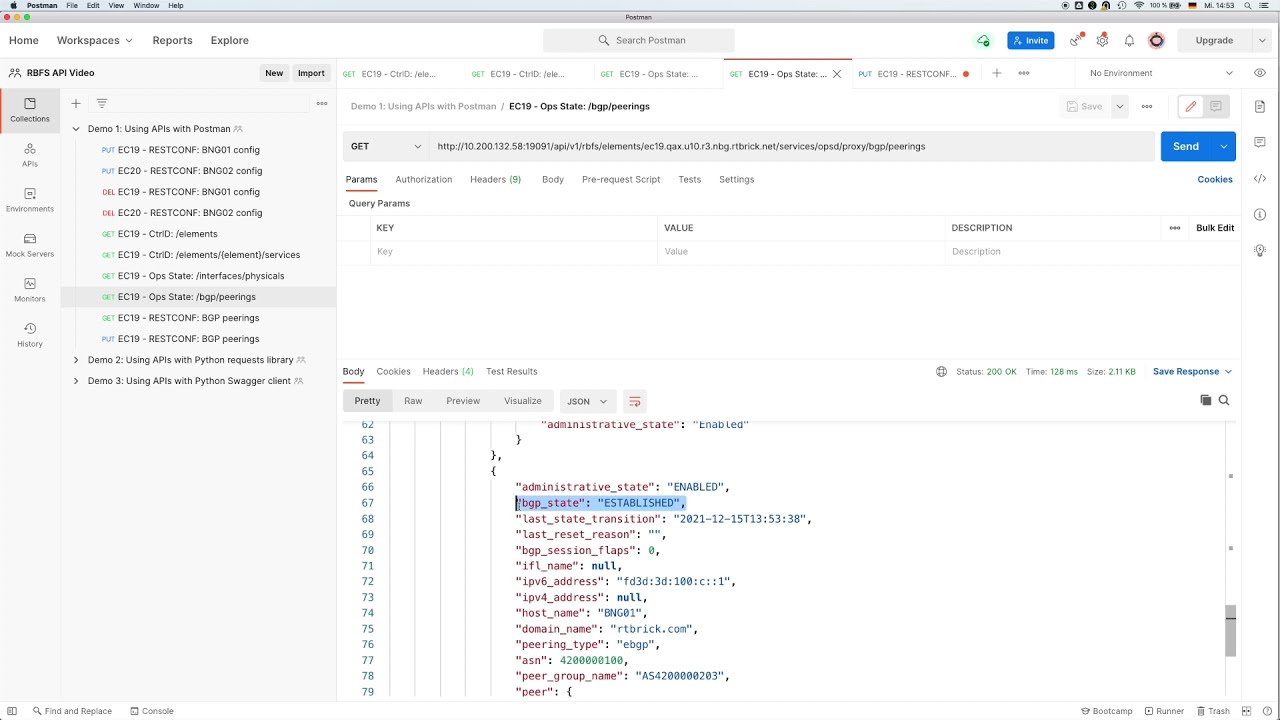Management and APIs
Consumer-Driven Management API
RtBrick’s Management API has been designed to simplify the integration with your existing OSS and BSS systems. It reduces the amount of time and effort required to make your disaggregated network operational, and it leverages widely-adopted industry tools and programming languages. RtBrick’s API is ‘consumer-driven’ – which means you can use the formats and languages of your choice, rather than have them imposed on you by a vendor. This allows you to build a client in Python, Go or Java, for example, as you prefer. And the APIs are all edited in Swagger, which is also a widely understood tool used by developers.RtBrick’s Management API actually comprises of several underlying APIs, which each follow the same consumer-driven approach.

RtBrick Management APIs
Container API
The CONTAINER-API manages the lifecycle of the RtBrick routing software container. It is also an entry point into all the other APIs.
Configuration API
This RESTCONF API Manages persistent configurations in your network such as implementation of physical interfaces and HQoS in service designs, as well as ‘semi-persistent’ configurations such as enterprise services. The RtBrick Management API also generates ROBOT Framework key-words so you can automate REST-Conf testing.
Operational State API
This API manages state and is ideal for your day-to-day operations. It includes show commands and can manipulate states such ending a subscriber session, validating the state of optics or clearing to BGP peers or ISIS adjacencies.
Prometheus API
The PROMETHEUS API exposes all available metrics from the routing software and the underlying switch hardware in a standard format (Prometheus Exposition Format). These metrics can be used to send alert conditions, reminders and provide other essential operational intelligence.
Event Interface
This interface generates syslog messages, including additional attributes, so that they can be recorded in external systems.
RBFS Native API
Should it be needed, this API allows direct interaction with any attribute inside the RtBrick Data Store, which is a single database that includes everything from forwarding table information to the temperature of the chips in the underlying hardware. For ease of use the Operational State API abstracts this into a simpler to use layer.
Subscriber Management
Note that subscriber management is typically handled dynamically by RADIUS, which is our consumer-service BSS integration point.The APIs are described and published here
RtBrick's Martin Ehlers explains RtBrick's APIs and shows them in action
And you get a rich set of open tools
You can access to a community of open Web 2.0 tools to add even more functionality, including:
- Grafana – a visualization tool
- Graylog – a log management system
- Prometheus – a monitoring tool
